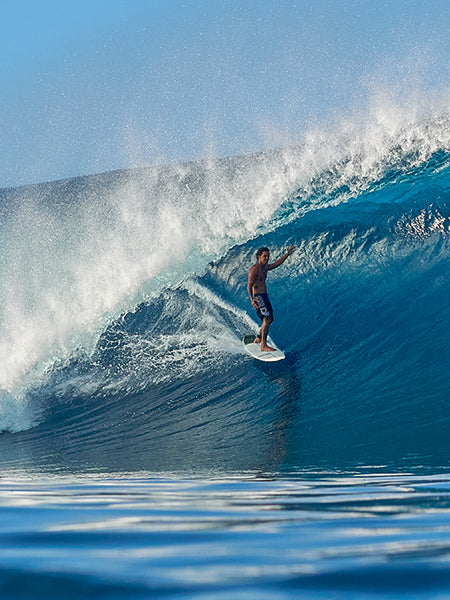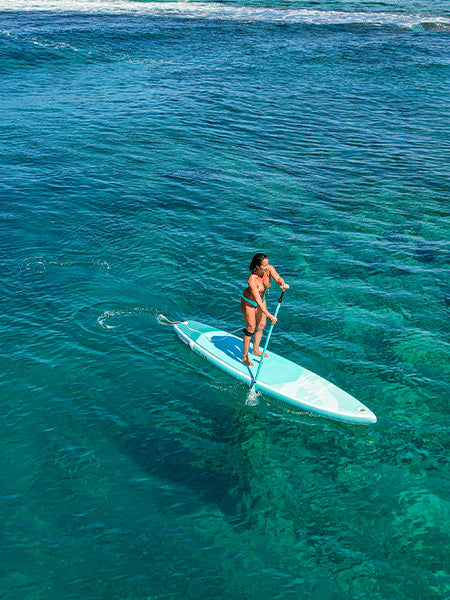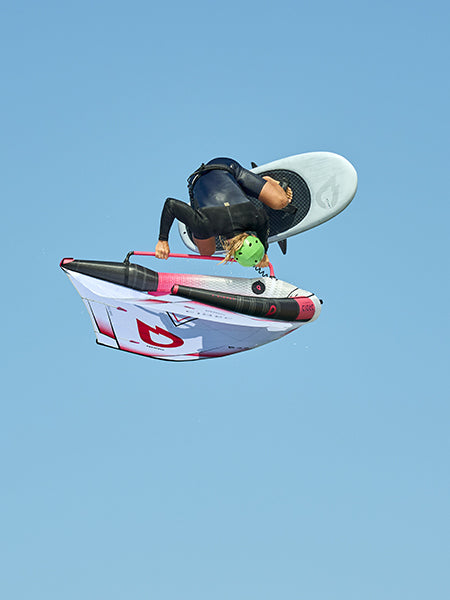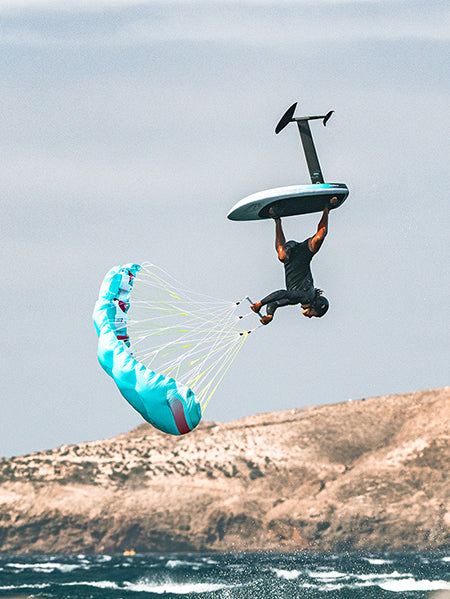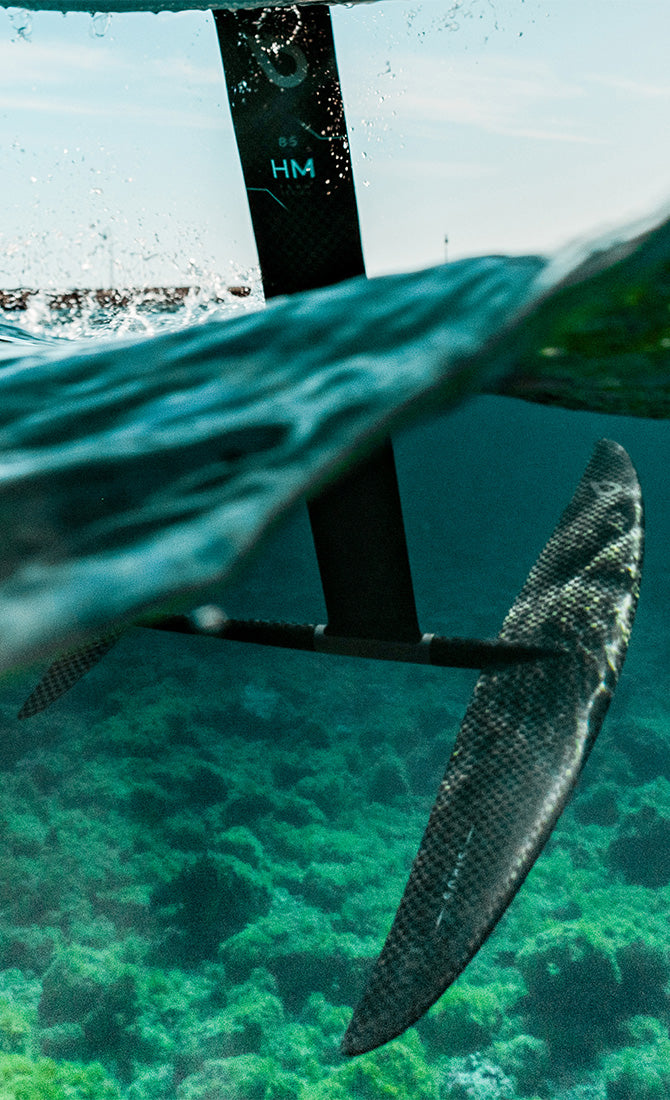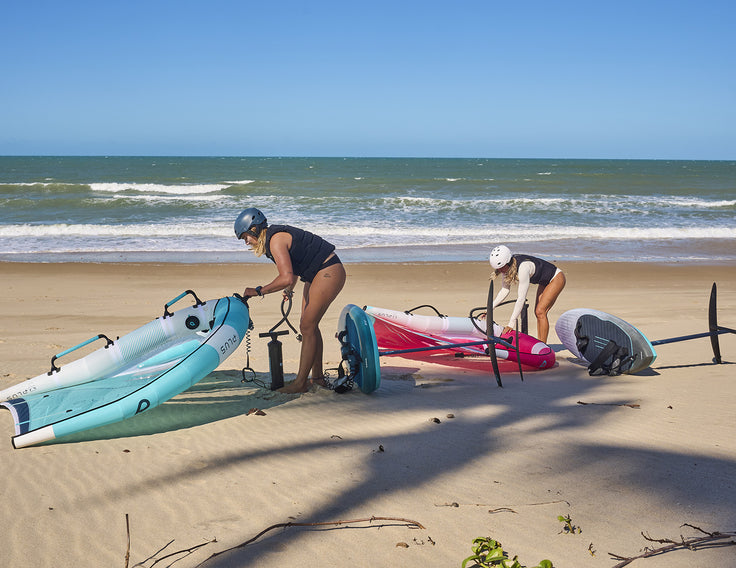Assess the difficulty of getting through the waves
Before hitting the water, it's important to gauge the challenge that lies ahead.
Wing foiling is one of the most accessible board sports, as long as you use the right gear and choose easy conditions. However, access can be seriously hindered when the swell breaks directly on your launch spot. You then have to "get through waves" which might feel like an easy stroll with tiny swells, or more like the myth of Sisyphus when the waves send you back to your starting point again and again.
We recommend two things:
- Read our "How To: Get through waves" carefully.
- Pay close attention to the conditions before launching.
You need to know when to give up and when to go for it. The skill develops quickly when you're at spots with a solid exposure to swells. If this isn't your case, here are a few tips to help you judge when it’s worth giving it a try!

Wingfoiler: Francesco, GONG team rider, with a Stunt FSP Pro, Curve H 2X and Neutra Boom.
A seasoned wing foiler is worth two.
In onshore conditions or with short-period waves (which break continuously without giving you a moment’s rest), what looks manageable from the beach can rapidly become quite a struggle once you're in the water. So, before hitting the water, it’s crucial to carefully analyze the conditions, as retreating to a more sheltered spot might be your best option.
Key elements to consider:
- Wave size: This is clearly the main factor in terms of difficulty. Between 0 and 50cm, getting out is easy. Once you exceed 50cm, a basic level of skill is necessary, but it’s within reach for most wing foilers. Keep in mind that it becomes challenging to resist the waves at this size. Just standing up and keeping your balance with your gear in waves over 50cm isn’t so easy anymore . Make sure to get beyond the impact zone as soon as you can, either by swimming or walking (if still possible), in order to start peacefully offshore.
When the waves reach close to 1 meter, things get seriously tougher. It’s no longer possible to get past the impact zone by swimming, let alone by walking. You need to get up on your gear and take off between two waves, quickly and precisely. Don’t hesitate too much, because holding your ground in 1-meter waves is a real challenge, and the sea never gets tired. Therefore, when the waves exceed a meter, unless you have favorable conditions with waves only coming in sets, providing calm moments for starting, consider retreating to a different spot.
- Wind direction: When the wind is fully onshore, even small half-meter waves can make it difficult to reach the necessary depth to start, as the wind constantly pushes you back toward the shore. With a side-onshore wind, getting away from the beach to find deeper water will be significantly easier. With a cross-shore wind, it's even easier because, in the event of a successful takeoff, you'll quickly be out of the impact zone.
- Wave frequency: Even if the waves are small but constantly breaking, they will stop you from moving forward. Every meter gained will be quickly lost in these conditions. There’s very little time between waves to get on your board and lift off.
On spots where waves come in sets, you just need to wait for the set to pass before taking your chance. However, be careful not to linger too long, as with a longer period, the size of the set waves can be surprisingly bigger.
- Beach slope: A gentle slope usually results in waves breaking over a wider area, making the exit more challenging. On the other hand, a beach with a steep slope means the wave will break very close to the shore (known as a shorebreak). When the wave frequency is favorable (long period), it’s easier to enter a spot with a steep slope and a shorebreak since you’ll quickly find enough depth to take off. However, be aware of the set waves that might surprise you. And, of course, the combination of a shorebreak and very short-period waves is definitely not desirable...
- Obstacles downwind: If the launch looks like it might be tricky and there are jetties, rocks, or boats downwind, we suggest playing it safe by moving further up the beach. Don’t take unnecessary risks if the situation seems dangerous. A bit of frustration is far better than a serious injury.

What the locals say
Ask the wing foilers around you for advice. If you're alone, it's rarely because you've found a secret spot ;) The fact that no wing foiler has thought of riding here should actually alert you. It's usually a sign that the local spot is somewhere else.
Ultimately, if the conditions are not favorable, and the option of a backup spot is not available in your area, it's always good to have a surfboard or kiteboard in your quiver ;)
 Wingfoiler: Bastien, GONG team rider, with a Stunt FSP Pro, Ypra Surf-Freestyle and Neutra.
Wingfoiler: Bastien, GONG team rider, with a Stunt FSP Pro, Ypra Surf-Freestyle and Neutra.
